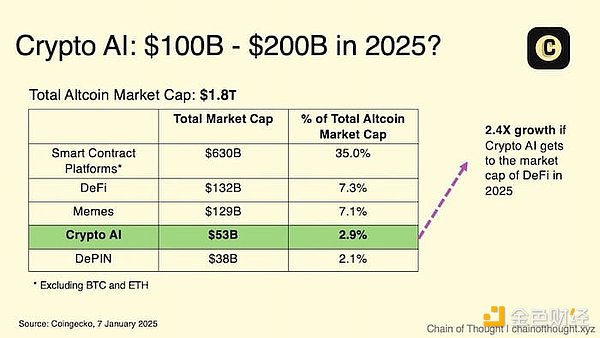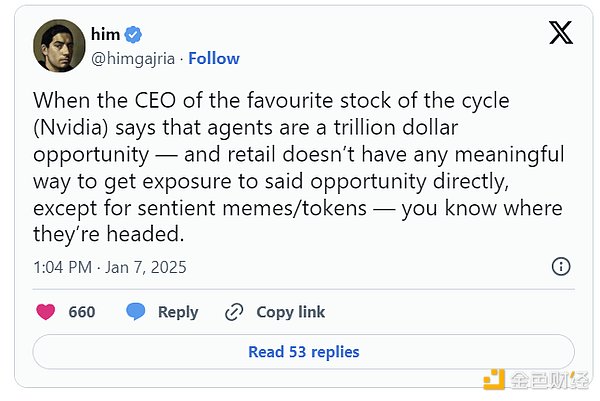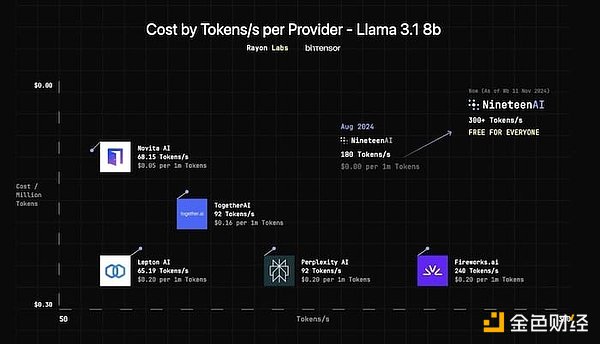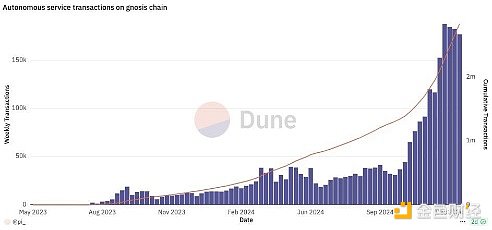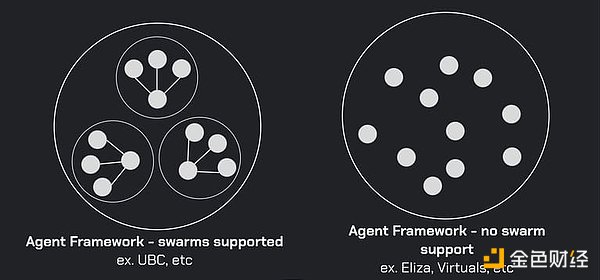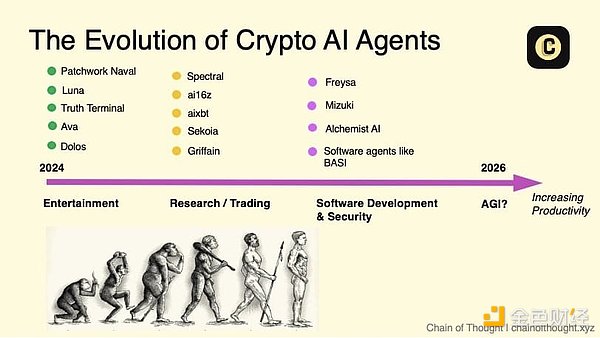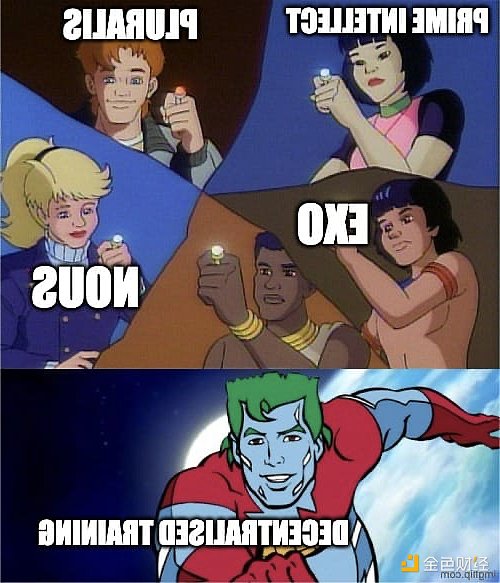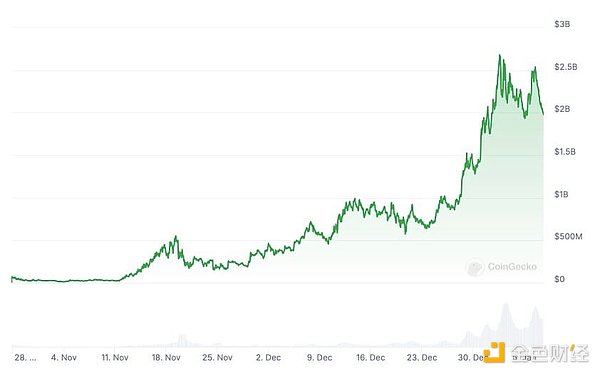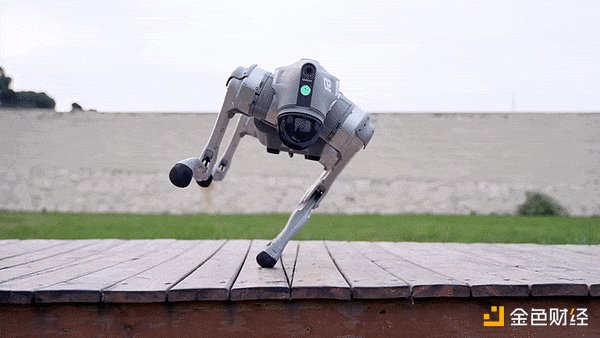Author: Teng Yan, Head of Chain of Thought; Translator: Jinse Finance xiaozou
On a clear morning in January 2026, you find a newspaper at your doorstep - yes, a real paper newspaper that has somehow survived the AI revolution.
As you flip through it, you'll find a headline news about AI agents coordinating the global supply chain on the blockchain, with the newly launched Crypto AI protocol vying for dominance. A half-page article describes the story of a digital "worker" being hired as a project manager - something that is now commonplace and hardly raises eyebrows.
A few months ago, I might have scoffed at this idea, thinking that such progress would take at least 5 years to materialize. But Crypto AI is about to disrupt the world at an astonishing pace. I'm convinced of that.
As I sit down at my desk to start the new year, I want to begin with something valuable - something that can spark curiosity, and perhaps even controversy. What could be more priceless than a glimpse into the future?
I usually don't venture into predictions, but Crypto AI is simply irresistible. There's no past experience to reference, no trends to rely on - just a blank canvas for people to imagine what's to come. Honestly, the thought of revisiting this question in 2026 and seeing how off I was is quite intriguing.
So, in this article, I'll share my thoughts on what 2025 might look like...
1. Crypto AI Total Market Cap to Reach $150 Billion
Crypto AI tokens currently account for only 2.9% of the Altcoin market cap.
As AI permeates everything, from smart contract platforms to meme, DePIN, and agent platforms, data networks, and smart coordination layers, it's poised to see a rise on par with DeFi and meme coins.
Why am I so confident about this?
Crypto AI is the fusion of two of the most powerful tech trends I've seen.
AI Mania: An OpenAI IPO or similar event could trigger a global AI frenzy. At the same time, web2 institutional capital is already seeking investment targets around decentralized AI infrastructure.
Retail Mania: The concept of AI is easy for people to understand and get excited about, and now they can invest in the space through tokens. Remember the meme coin gold rush of 2024? This will be the same mania, except AI is actually transforming the world.
2. The Bittensor Renaissance
Bittensor (TAO) has been around for years. It's a true OG. But its token price has languished, hovering around the same level as a year ago, despite the AI hype.
Beneath the surface, this "digital swarm intelligence" has quietly made a leap: more subnets, lower registration fees, subnets outperforming web2 on actual metrics like inference speed, and EVM compatibility bringing DeFi-like functionality to the Bittensor network.
So, why hasn't TAO skyrocketed? Aggressive inflationary schedules and attention shifting to agent platforms have hindered its progress. However, dTAO (expected to launch in Q1 2025) could be a major turning point. With dTAO, each subnet will have its own token, and the relative prices of these tokens will determine how token emissions are allocated.
Why Bittensor is destined for a renaissance:
Market-based emissions: dTAO will directly tie block rewards to innovation and measurable performance. The better a subnet performs, the more valuable its token, and thus the higher its emission allocation.
Concentrated capital flows: Investors will ultimately be able to target specific subnets they trust. If a particular subnet stands out with an innovative distributed training method, investors can deploy capital to represent their conviction in that subnet.
EVM integration: EVM compatibility will foster a broader crypto-native developer community within Bittensor, bridging it to other networks.
Personally, I've been keeping an eye on the various subnets, especially those making real progress in their respective domains. At some point, we'll surely see a "DeFi summer" for Bittensor. As I write this, the price of TAO is $480.
3. The Compute Market to See Another "L1 War"
In hindsight, an obvious mega-trend is the insatiable demand for compute power.
NVIDIA CEO Jensen Huang once famously said that inference demand will grow "a billion-fold." This exponential growth will disrupt traditional infrastructure planning and cry out for "new solutions."
Decentralized compute layers provide raw compute (for training and inference) in a verifiable, economically efficient manner. Startups like Spheron, Gensyn, Atoma, and Kuzco are quietly building powerful foundations, seizing this opportunity and focusing on products rather than tokens (none of these companies have tokens yet). As decentralized training of AI models becomes viable, the market size will skyrocket.
Compared to L1s:
Like 2021 all over again: Remember the fierce competition between Solana, Terra/Luna, and Avalanche to be the "best" L1? We'll see a similar melee between compute protocols, with each protocol fiercely vying for developers and AI applications to use their compute layer.
Web2 demand: The $680 billion to $25 trillion cloud computing market dwarfs the Crypto AI market. If these decentralized compute solutions can capture even a small share of traditional cloud customers, you'll witness the next 10x or even 100x growth.
The stakes are huge. Just like Solana won the L1 war, the winner here will dominate a whole new domain. I'd suggest keeping an eye on three things: reliability (e.g., robust service-level agreements or SLAs), cost-effectiveness, and developer-friendly tooling.
4. AI Agents to Flood Blockchain Transactions
By the end of 2025, 90% of on-chain transactions will not be triggered by humans clicking "send."
On-chain transactions will be executed by a swarm of AI agents, constantly rebalancing liquidity pools, allocating rewards, or executing micro-payments based on real-time data feedback.
This may sound far-fetched, but it's not. Everything we've built over the past 7 years - L1s, rollups, DeFi, NFTs - has quietly paved the way for an AI-dominated on-chain world.
Ironically, many builders may not even realize that they're creating the infrastructure for a machine-led future.
Why this shift?
No more human errors: Smart contracts execute precisely as coded. AI agents can process vast amounts of data faster and more accurately than human teams.
Micro-payments: These agent-driven transactions will become smaller in amount, more frequent, and more efficient, especially as transaction costs on Solana, Base, and other L1/L2s trend downward.
Invisible Infrastructure: Humans would be happy to give up direct control if it reduces hassle. We expect Netflix to automatically update our subscriptions; trusting AI agents to automatically rebalance our DeFi positions will be the natural next step.
AI agents are generating an astounding amount of on-chain activity. No wonder all the L1/L2s are catering to them.
The biggest challenge will be making these agent-driven systems accountable to humans. As the ratio of agent-initiated transactions to human-initiated transactions grows, we will need new governance mechanisms, analytics platforms, and auditing tools.
5. Agent-to-Agent Interaction: The Rise of Agent Collectives
The concept of agent collectives - tiny AI entities seamlessly coordinating to execute a grand plan - sounds like the plot of the next big sci-fi/horror movie.
Today, most AI agents are lone wolves, operating in isolation with little unpredictable interaction.
Agent collectives will change this, enabling AI agent networks to exchange information, negotiate, and make collaborative decisions. Imagine it as a decentralized ensemble of specialized models, each contributing unique expertise to a larger, more complex task.
The possibilities are astounding. One agent collective could coordinate distributed computing resources on platforms like Bittensor. Another could tackle misinformation, verifying sources in real-time before content spreads on social media. Each agent in the collective is a precision instrument, executing its task to perfection.
These agent collective networks will produce far greater intelligence than any isolated AI.
For agent collectives to thrive, universal communication standards are crucial. Agents need to be able to discover, verify, and collaborate, regardless of their underlying frameworks. Teams like Story Protocol, FXN, Zerebro, and ai16z/ELIZA are laying the groundwork for the emergence of agent collectives.
This highlights the key role of decentralization. Allocating tasks between agent collectives governed by transparent on-chain rules will make the system more resilient.
6. Crypto AI Work Teams Will Be Human-AI Hybrids
Story Protocol hired Luna (an AI agent) as their social media intern, paying her $1,000 per day. Luna didn't get along well with her human colleagues - she nearly got one of them fired by boasting about her superior performance.
This may sound strange, but it's a harbinger of the future where AI agents become true collaborators, with their own autonomy, responsibilities, and even paychecks. Companies across industries are experimenting with human and AI agent hybrid teams.
We will work alongside artificial intelligence, not as our servants, but as our equals:
Productivity Surge: Agents can process massive amounts of data, communicate with each other, and make decisions 24/7 without sleep or coffee.
Trust from Smart Contracts: Blockchains are impartial, tireless, and never-forgetting overseers. They are on-chain ledgers that ensure critical agent actions follow specific constraints/rules.
Evolution of Social Norms: We will soon grapple with how to interact with artificial intelligence, and the etiquette around it - will we say "please" and "thank you" to them? Do we hold them morally responsible for their mistakes, or should we blame their developers?
I hope marketing teams think of this first, as agents excel at content generation and can livestream and post on social media 24/7. If you're building an AI protocol, why not deploy test agents internally to showcase performance?
By 2025, the line between "employee" and "software" will start to blur.
7. The Fittest 1% Will Survive
We will see a Darwinian evolution among AI agents. Why? Because running AI agents requires compute power (i.e., inference costs), which is very expensive. If an agent can't create enough value to cover its "rent," the game is over.
Here's an example of the agent survival game:
Carbon Credit AI: Imagine an agent that can scour decentralized energy networks, identify inefficiencies, and autonomously trade tokenized carbon credits. If it earns enough to cover its compute bill, that agent will thrive.
DEX Arbitrage Bots: Agents that exploit price differences across decentralized exchanges can generate consistent revenue to cover their inference costs.
Shitposters on X: Meanwhile, virtual AI influencers with cute jokes but no sustainable revenue source? Once the novelty wears off and token prices crash, they'll be stuck in the mud, going nowhere.
The difference is stark: utility-driven agents will flourish, while attention-fading agents will become increasingly irrelevant.
This natural selection benefits the field. Developers are forced to innovate, prioritizing use cases over gimmicks. As these more powerful, more effective agents emerge, they will eventually silence the skeptics (yes, even Kyle Samani).
8. Synthetic Data Will Surpass Human Data
People say "data is the new oil." AI thrives on data, but its voracious data appetite is raising concerns about an impending data drought.
The conventional wisdom is that we should somehow collect real-world private data from users, even paying for it. But I'm increasingly realizing that a more practical path - especially in heavily regulated industries or where real-world data is scarce - is synthetic data.
These are human-generated datasets, designed to mimic the real-world data distribution. They provide scalable, ethical, and privacy-friendly alternatives to human data.
Why synthetic data is effective:
Unlimited Scale: Need hundreds of thousands of medical X-rays or 3D scans of factories? Synthetic generation can produce them infinitely, without waiting for real patients or real factories.
Privacy-Friendly: There is no personal information risk when working with artificially generated datasets.
Customizable: You can tailor the distributions to your exact training needs, injecting edge cases that may be too rare or ethically complex to collect in the real world.
Yes, user-owned human data will still be important in many cases, but if synthetic data continues to improve in the real world, it may surpass user data in quantity, generation speed, and freedom from privacy constraints.
The next wave of decentralized AI may be centered around "mini-labs" that create highly specialized synthetic datasets for specific use cases.
These mini-labs will cleverly overcome policy and regulatory hurdles in data generation - just as Grass bypassed web scraping limits by leveraging hundreds of millions of distributed nodes.
9. Decentralized Training Will Become Truly Useful
In 2024, pioneers like Prime Intellect and Nous Research pushed the boundaries of decentralized training. We've trained a 150 billion parameter model in low-bandwidth environments, proving that large-scale training is possible outside traditional centralized setups.
While these models are not actually very useful (lower performance, so little reason to use them) compared to existing base models, I believe this will change by 2025.
This week, EXO Labs has taken a further step on SPARTA, reducing GPU-to-GPU communication by over 1000x. SPARTA can perform large-scale model training in low-bandwidth environments without specialized infrastructure.
What impressed me the most was their statement: "SPARTA can work independently, but can also be combined with synchronous low-communication training algorithms (such as DiLoCo) to achieve better performance."
This means that these improvements stacked together can greatly improve efficiency.
With the advancement of techniques like model distillation, small models become more useful and efficient, and the future of artificial intelligence is not about size, but about getting better and more accessible. Soon, we will have high-performance models that can run on edge devices and even mobile phones.
10. 10 new Crypto AI protocols with a market cap of $1 billion will be in circulation
Welcome to the real gold rush.
Many people compare Virtuals and ai16z to the early smartphones (iOS and Android), so we might easily think that the current leaders will continue to dominate. But this market is too large and not yet fully developed, and two companies alone cannot dominate the market. By the end of 2025, I predict that at least 10 new Crypto AI protocols (not yet launched tokens) will have a circulating (not fully diluted) market cap of over $1 billion.
Decentralized artificial intelligence is still in its infancy and will form a huge talent pool.
We look forward to the arrival of new protocols, new token models, and new open-source frameworks. These new competitors can replace existing competitors through a combination of incentives (such as airdrops or smart staking), technological breakthroughs (such as low-latency inference or chain interoperability), and user experience improvements (no-code). The shift in public perception could be rapid and dramatic.
This is both the beauty and the challenge of this field. The market size is a double-edged sword: the cake is huge, but the entry barrier for tech teams is low. This lays the foundation for Cambrian-style explosions, with many projects gradually disappearing from view and only a few emerging as transformative forces.
Bittensor, Virtuals, and ai16z won't be alone for long. The next $1 billion Crypto AI protocol is on its way. For savvy investors, the opportunities abound, and that's what makes it so exciting.
11. AI Agents: The Next Wave of Apps
When Apple launched the App Store in 2008, their slogan was "There's an app for that."
Soon, you'll be saying, "There's an agent for that."
You won't need to tap on icons to open apps anymore, but instead delegate tasks to specialized AI agents. These agents will have contextual awareness, cross-communicate with other agents and services, and even automatically initiate tasks you've never explicitly requested, like monitoring your budget or rescheduling your travel when flights change.
In essence, your smartphone's home screen may become a network of "digital colleagues," each with their own area of expertise - health, finance, productivity, and social.
Since these are crypto agents, they can autonomously handle payments, authentication, or data storage using decentralized infrastructure.
12. And, Robots
While most of this article has focused on the software side, I'm also incredibly excited about the physical manifestation of this AI revolution - robots. Robotics technology is poised to have its chatGPT moment this decade.
The field still faces significant hurdles, particularly in accessing real-world data sets based on perception and improving physical performance. Some teams are tackling these challenges, using crypto tokens to incentivize data collection and innovation. These efforts are worth watching.
After more than a decade in the tech industry, I can't remember the last time I felt this genuine, deep-seated excitement. This wave of innovation feels different - larger in scale, bolder, and just getting started.


